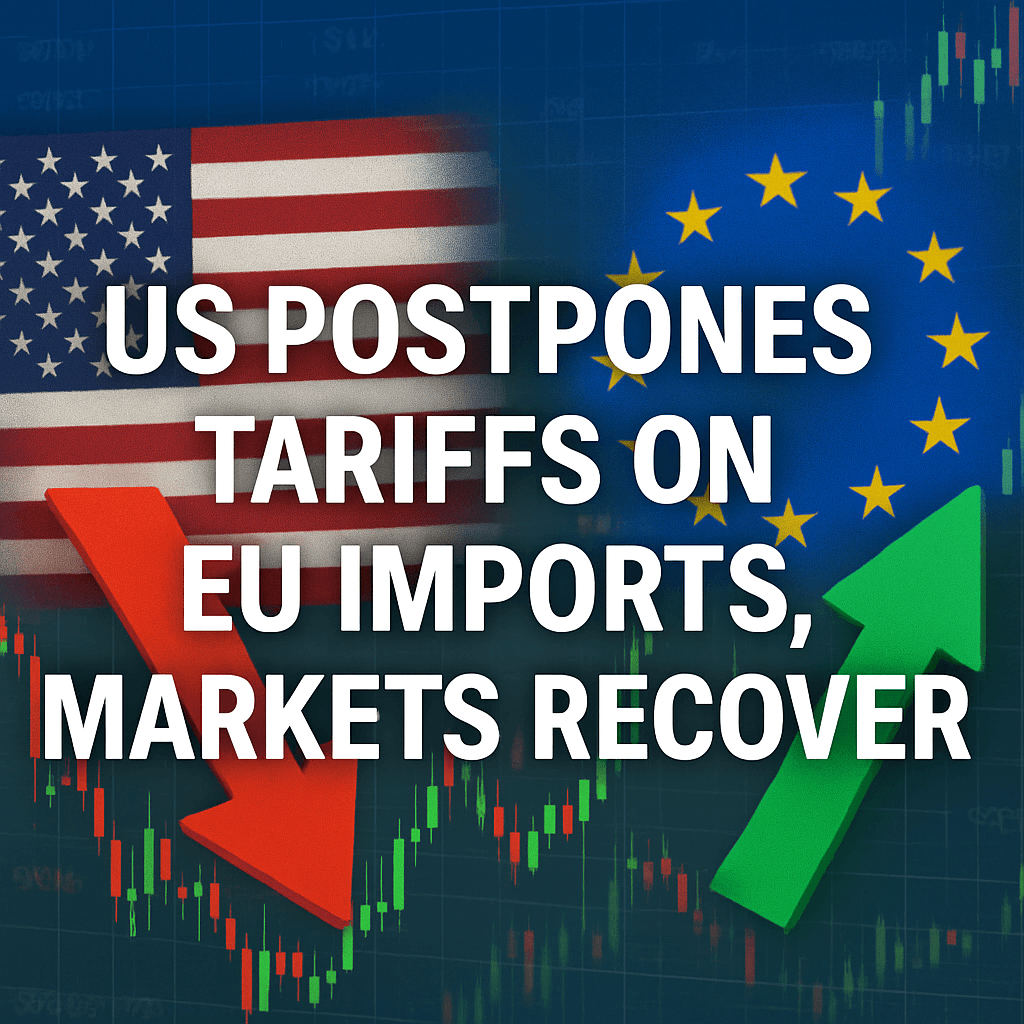US Postpones Tariffs on EU Imports, Markets Recover

Following protracted negotiations, US President Donald Trump announced a postponement of planned 50% tariffs on European Union imports to 9 July 2025. The move follows a high-level phone call with European Commission President Ursula von der Leyen and triggered a broad rally in global markets.
Tariff Extension Details
On Sunday evening, President Trump posted on Truth Social: “I agreed to the extension — July 9, 2025 — It was my privilege to do so.” This echoes von der Leyen’s prior statement on X:
“The EU and US share the world’s most consequential and close trade relationship. Europe is ready to advance talks swiftly and decisively. To reach a good deal, we would need the time until July 9.”
Originally set at 20% on 2 April, the reciprocal tariffs were cut to 10% for 90 days. Amid intra-EU dissent and stalled talks, Trump threatened a 50% levy from 1 June, citing non-tariff barriers ranging from disparate VAT regimes to “unjustified lawsuits against American companies.” Last week, EU Trade Commissioner Maroš Šefčovič submitted a revised proposal, aimed at reducing average MFN duties by 3 percentage points across key industrial chapters in the Harmonized System (HS).
Market Response
European Equities
- Euro Stoxx 600 rose 1.00% by 9:25 am CEST.
- DAX surged 1.67% as investors priced in an easing of trade risks.
US Futures
- Dow Jones Industrial Average futures climbed 0.85%.
- S&P 500 and Nasdaq 100 futures added 1.00% and 1.19%, respectively.
Currency Markets
The euro strengthened above 1.40 USD—a one-month high—while the US dollar index slipped below 99. According to Kyle Rodda, senior market analyst at Capital.com Australia,
“Traders are treating new tariff threats as bluster, betting that any existing levies will eventually be softened.”
Deeper Analysis
Impact on Global Supply Chains and Inflation
Tariff hikes, particularly a 50% rate on HS chapters 72 and 73 (steel and aluminum), could raise input costs by up to 7% in downstream sectors, based on a pass-through elasticity of 0.15–0.25 estimated by the IMF. Higher import duties are typically followed by price adjustments in final goods, feeding into headline CPI. Postponement likely caps near-term upward pressure on inflation in both the US and EU.
Technical Assessment of Trade Measures
- Non-Tariff Barriers: Divergent VAT regimes can impose effective duties up to 25% on digital and automotive imports, according to the WTO’s most recent Trade Policy Review.
- Customs Duties: The EU’s revised offer reportedly cuts average MFN rates from 4.7% to 1.8% on machinery (HS 84–85) and from 6.2% to 2.5% on chemical products (HS 28–38).
- Dispute Resolution: Both sides have signaled willingness to invoke WTO arbitration panels if bilateral talks falter.
Scenarios for US-EU Trade Relations
- Comprehensive Deal: Mutual tariff rollbacks, enhanced market access for services, and streamlined customs procedures could lift bilateral trade by 3–5% over two years.
- Partial Agreement: Targeted concessions on steel, aluminum, and digital services, with broader talks postponed until post-election cycles.
- No Resolution: Gradual escalation through non-tariff actions and counter-measures, risking WTO litigation and supply-chain fragmentation.
David Lynch, senior economist at the Peterson Institute for International Economics, notes: “A calibrated de-escalation helps stabilize market sentiment but leaves structural barriers in place. True integration requires harmonized standards and dispute-settlement reforms.”
Looking Ahead
With the Federal Reserve and European Central Bank monitoring inflation trends, central bank policy divergence may narrow if trade tensions ease. Investors will watch forthcoming meetings of the G7 finance ministers and the WTO’s upcoming Trade Negotiations Committee for signals on both sides’ commitment to a negotiated settlement.